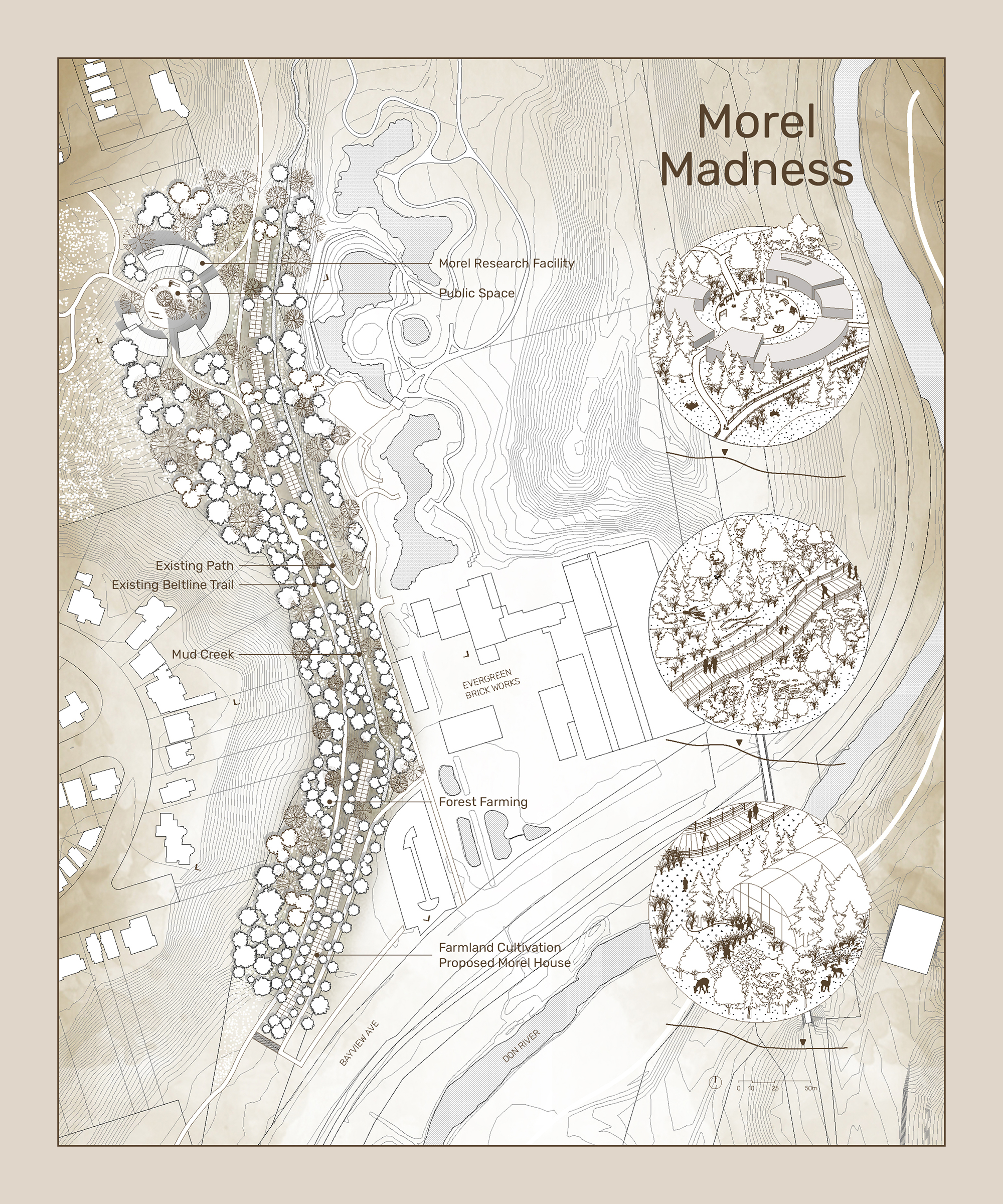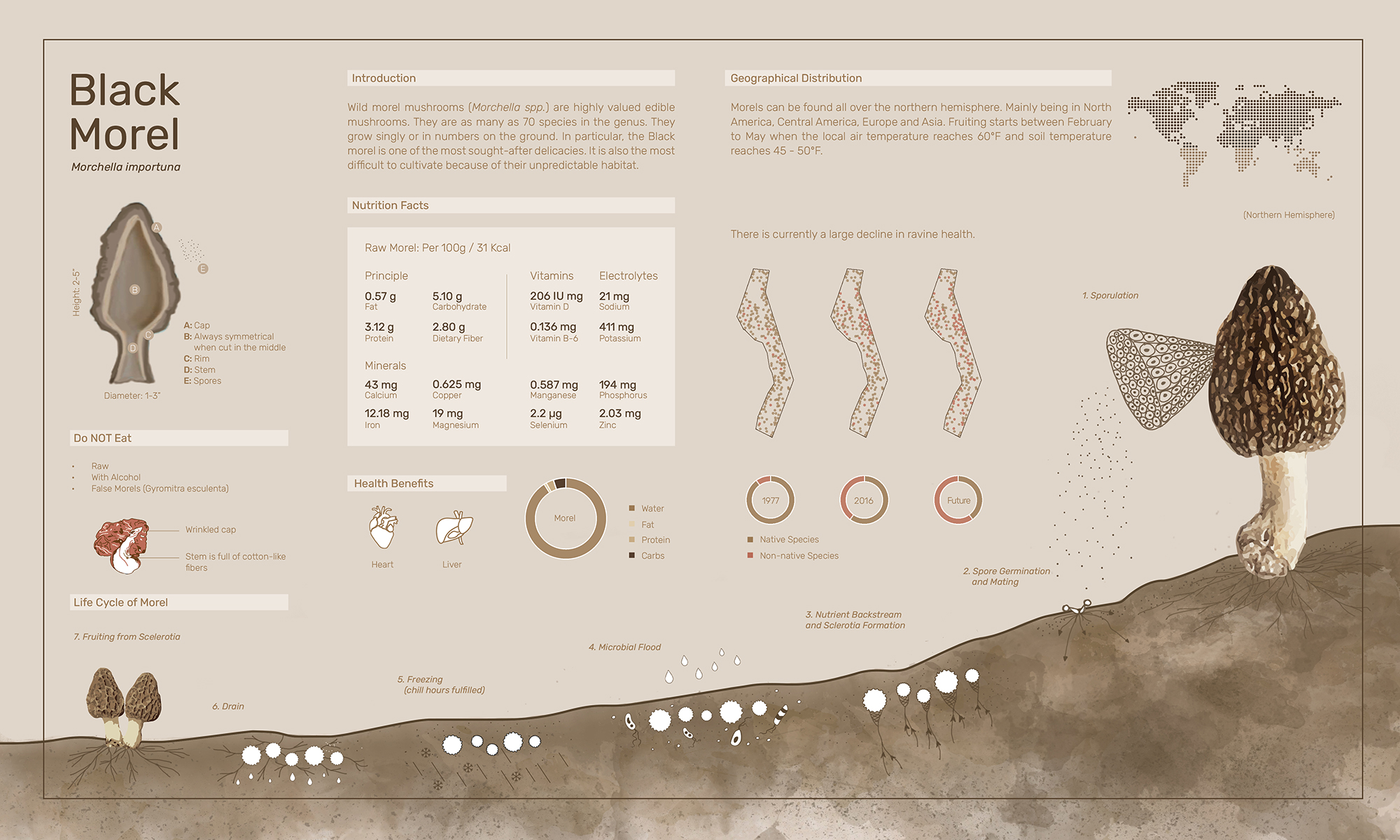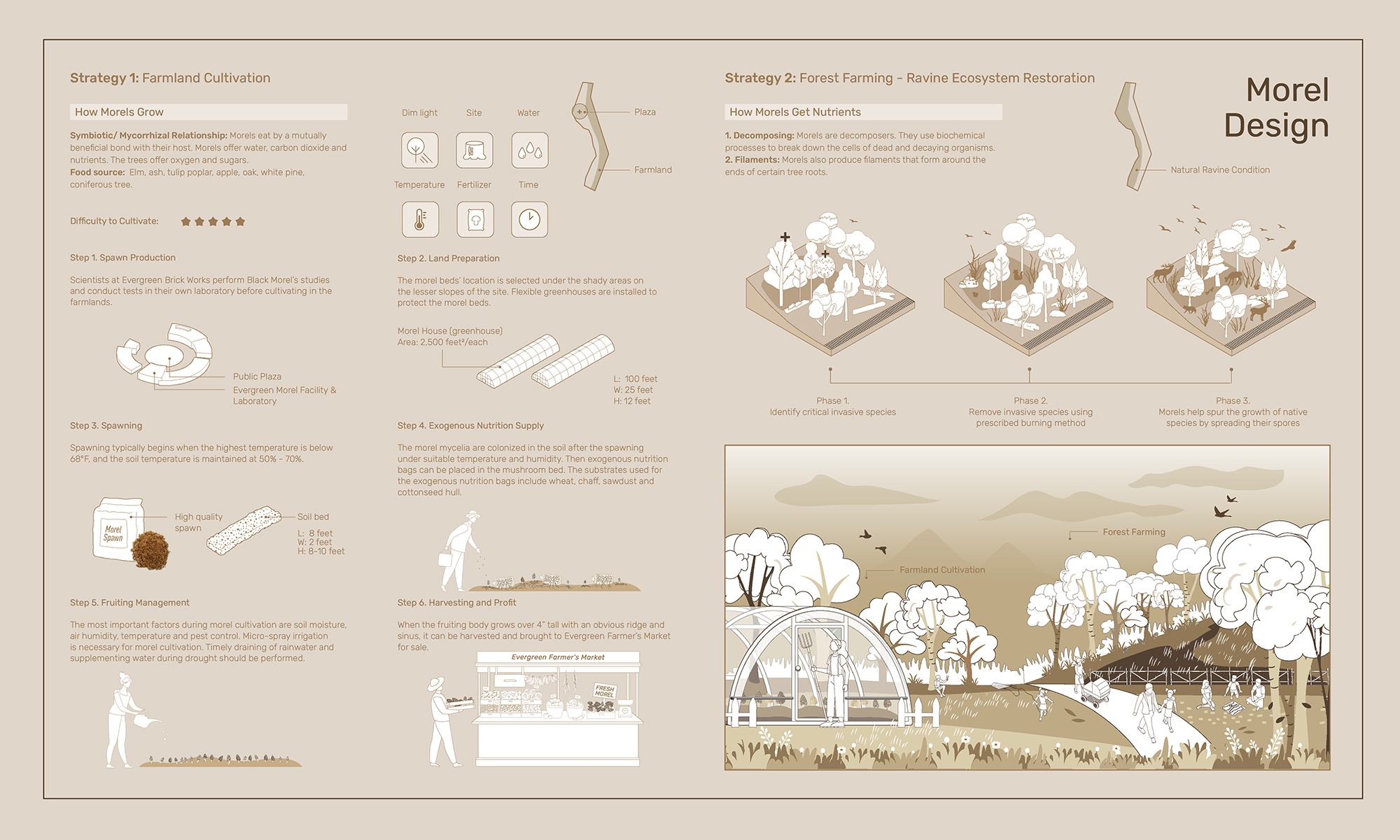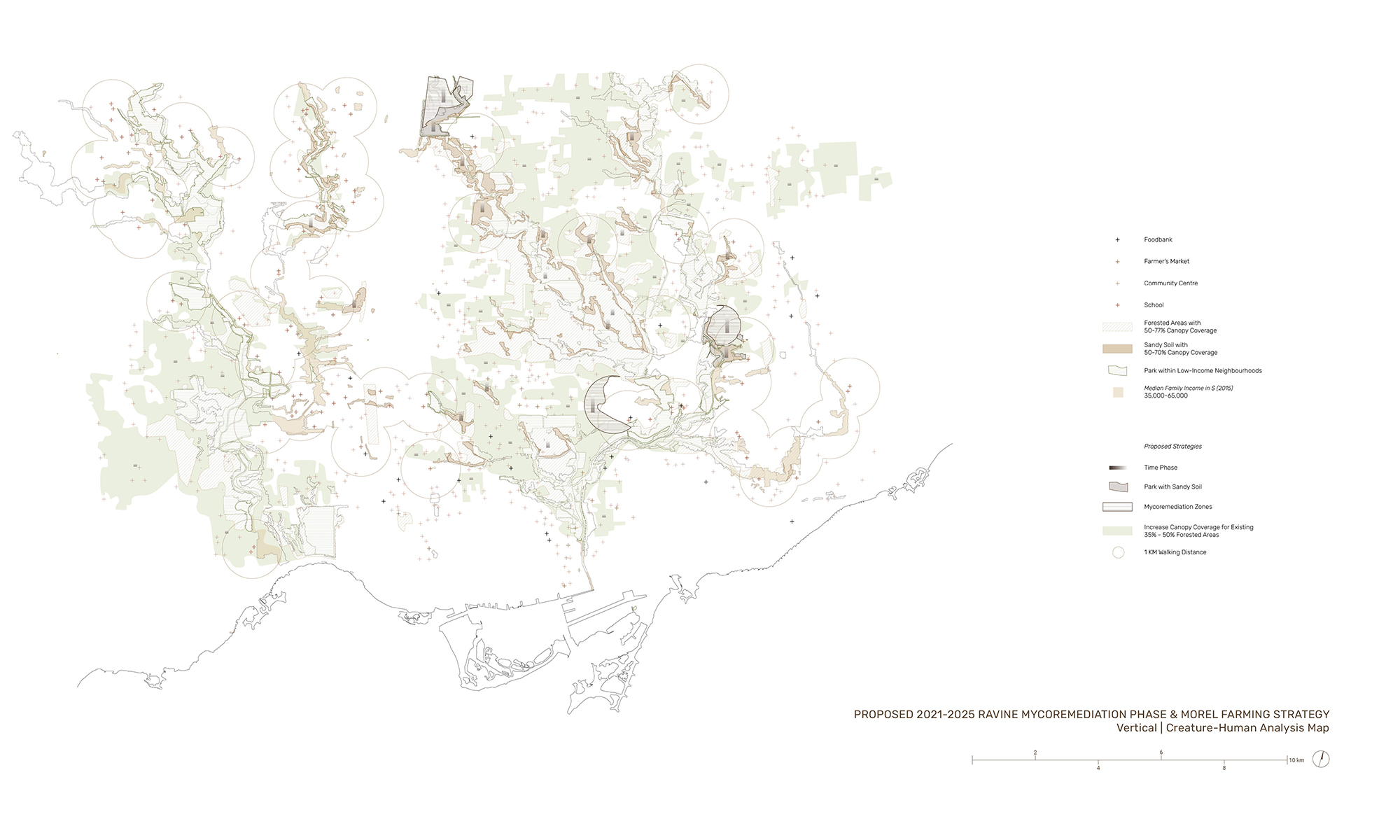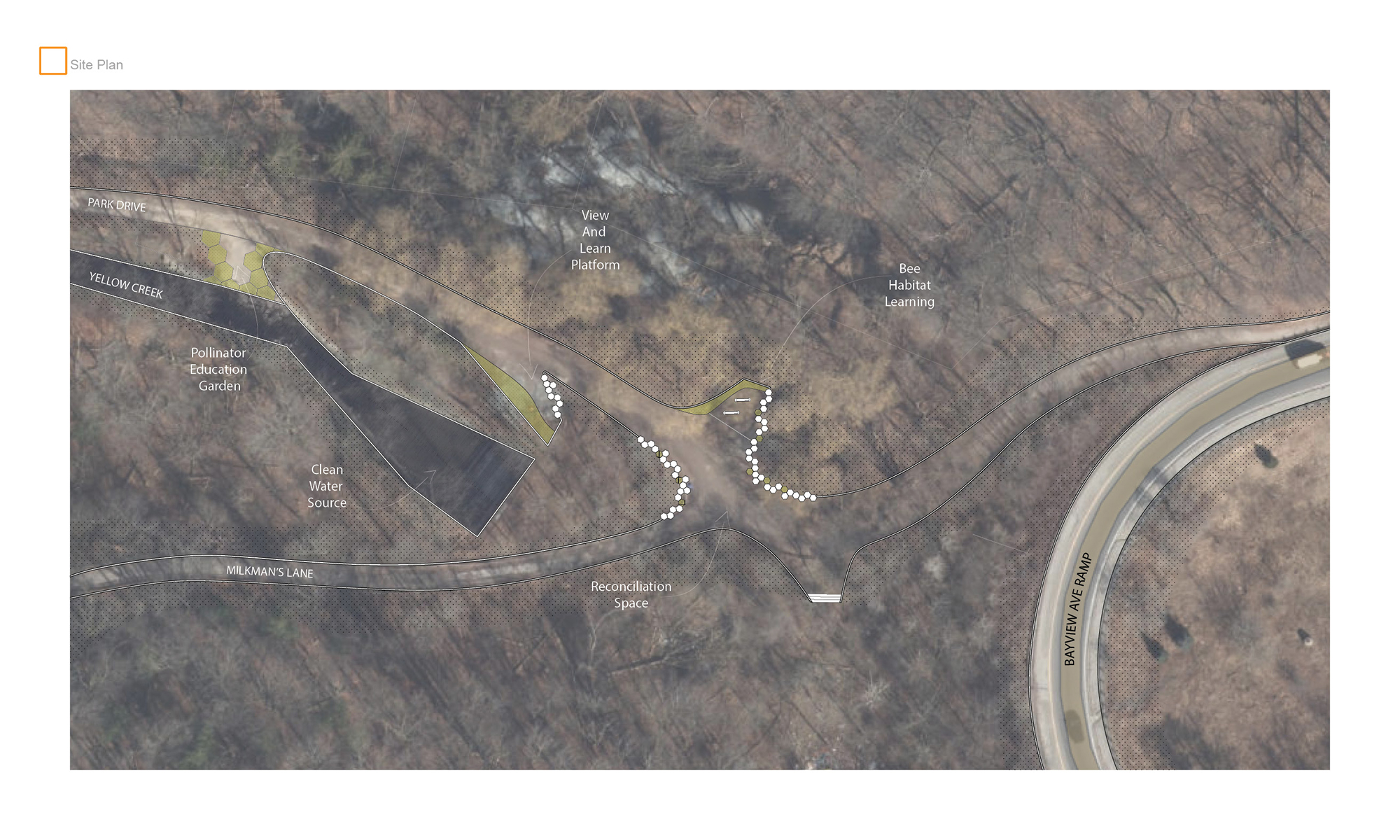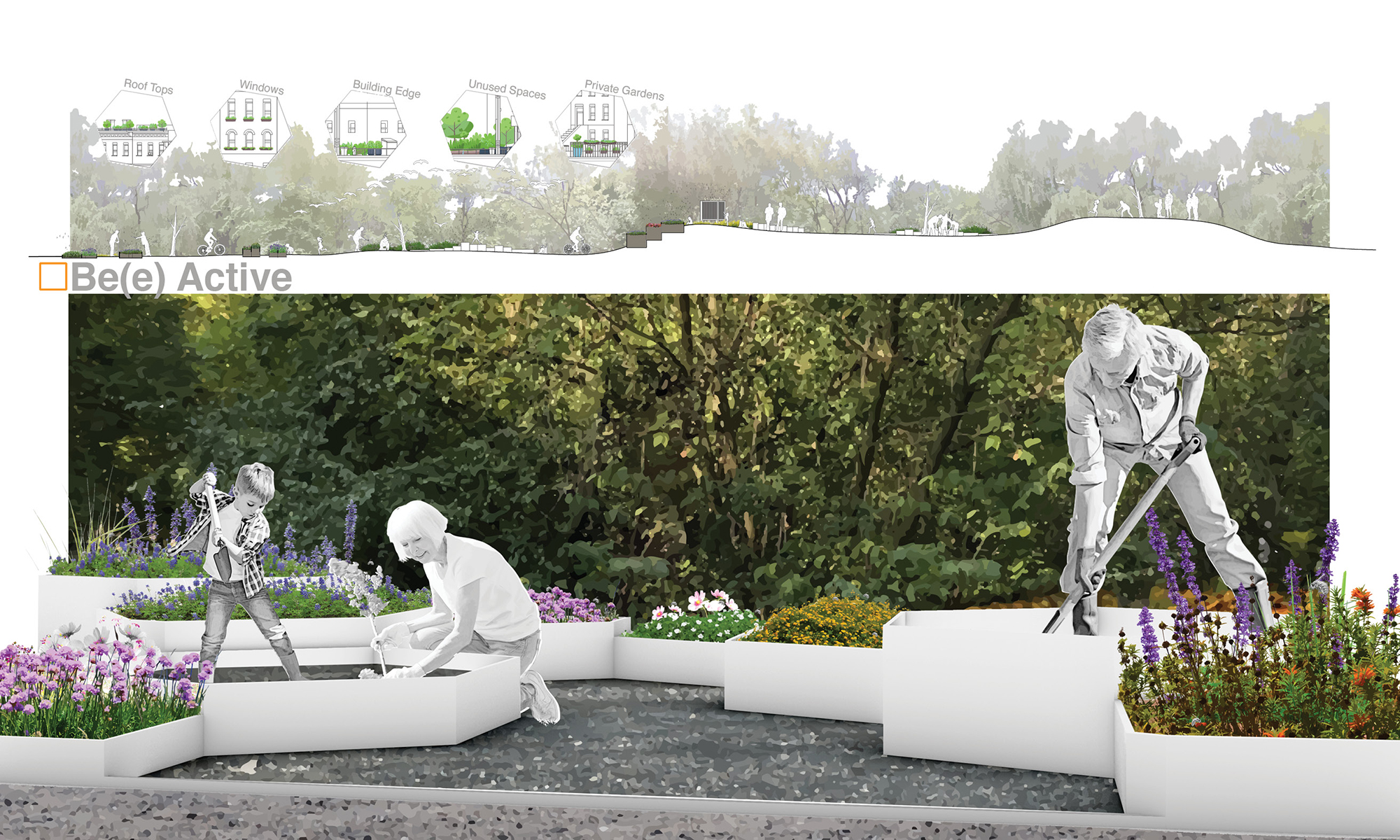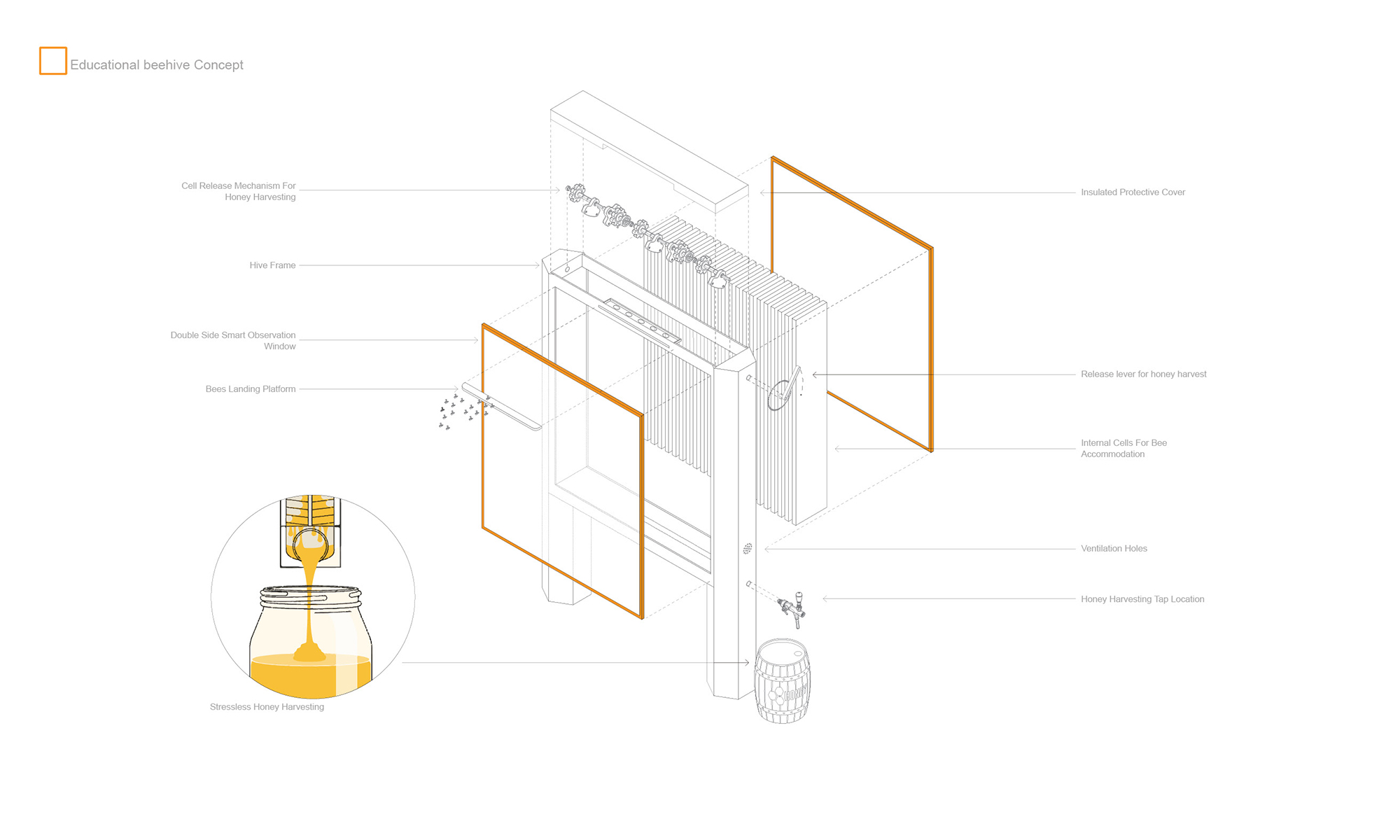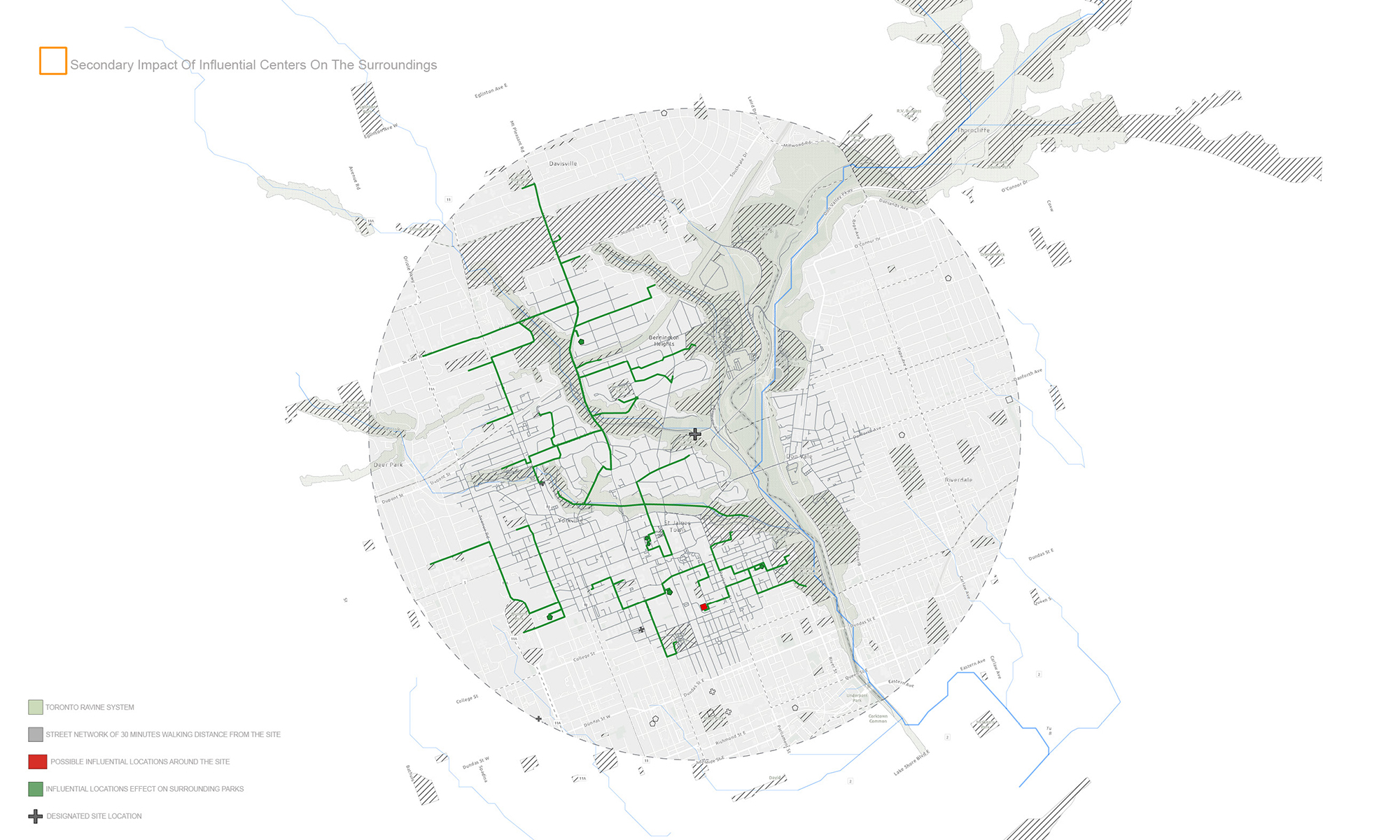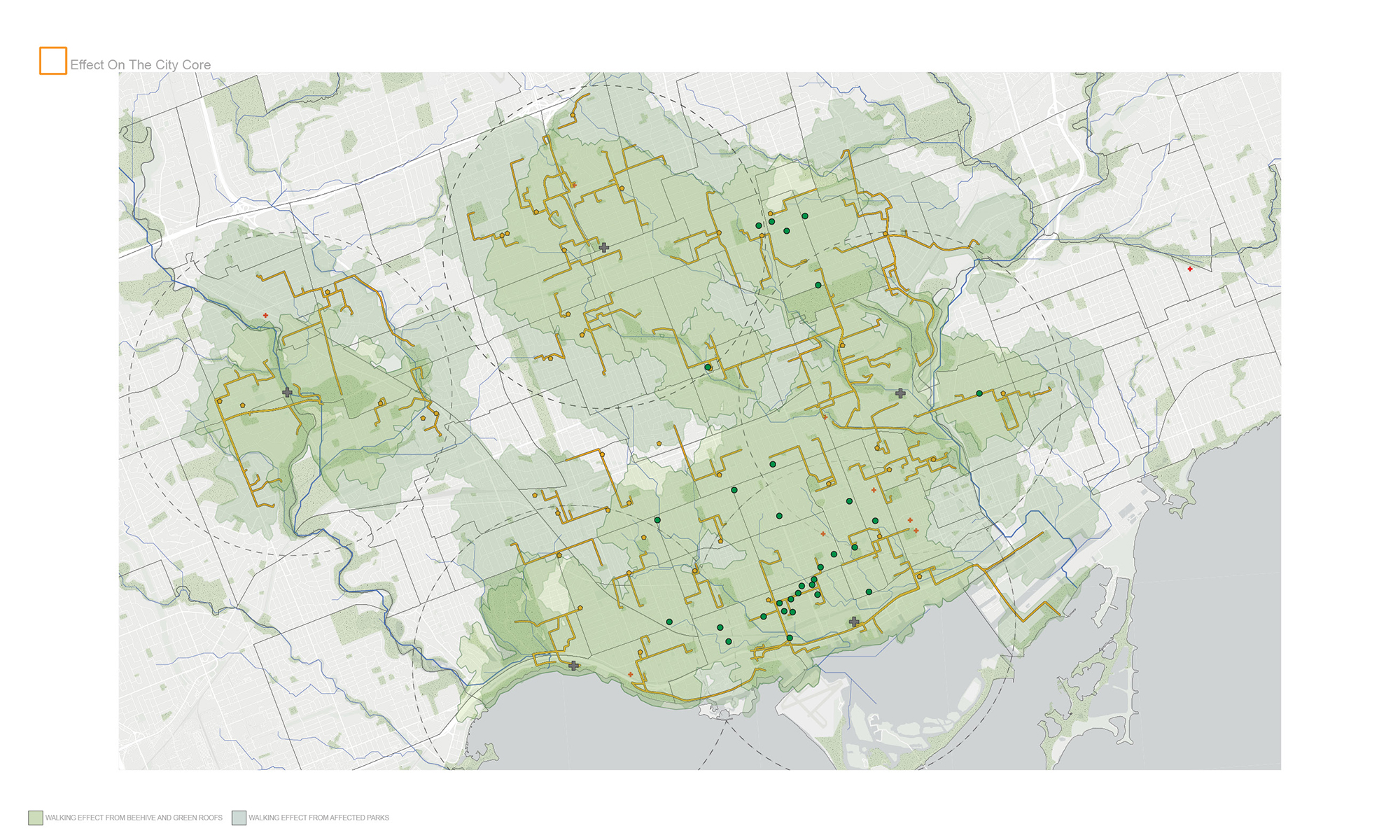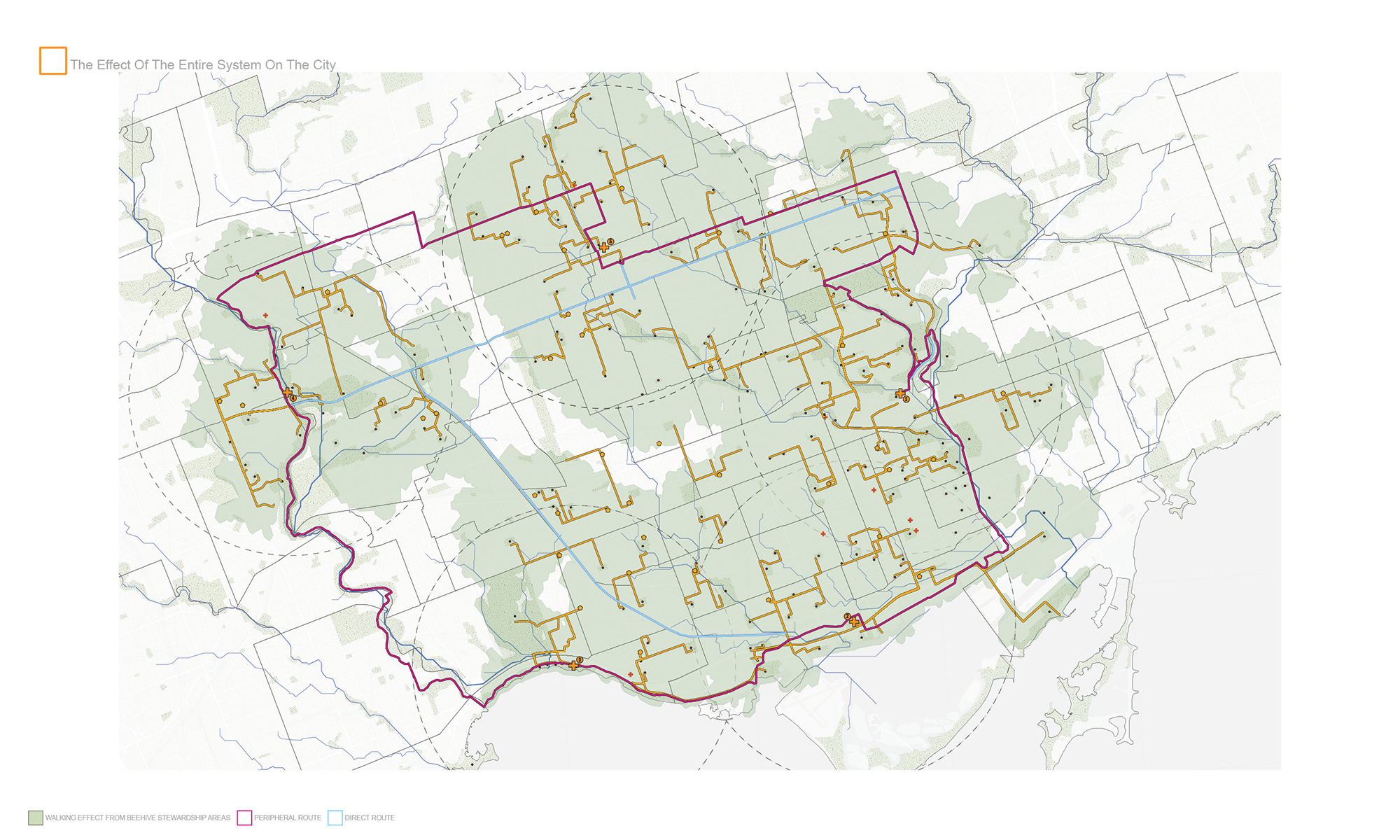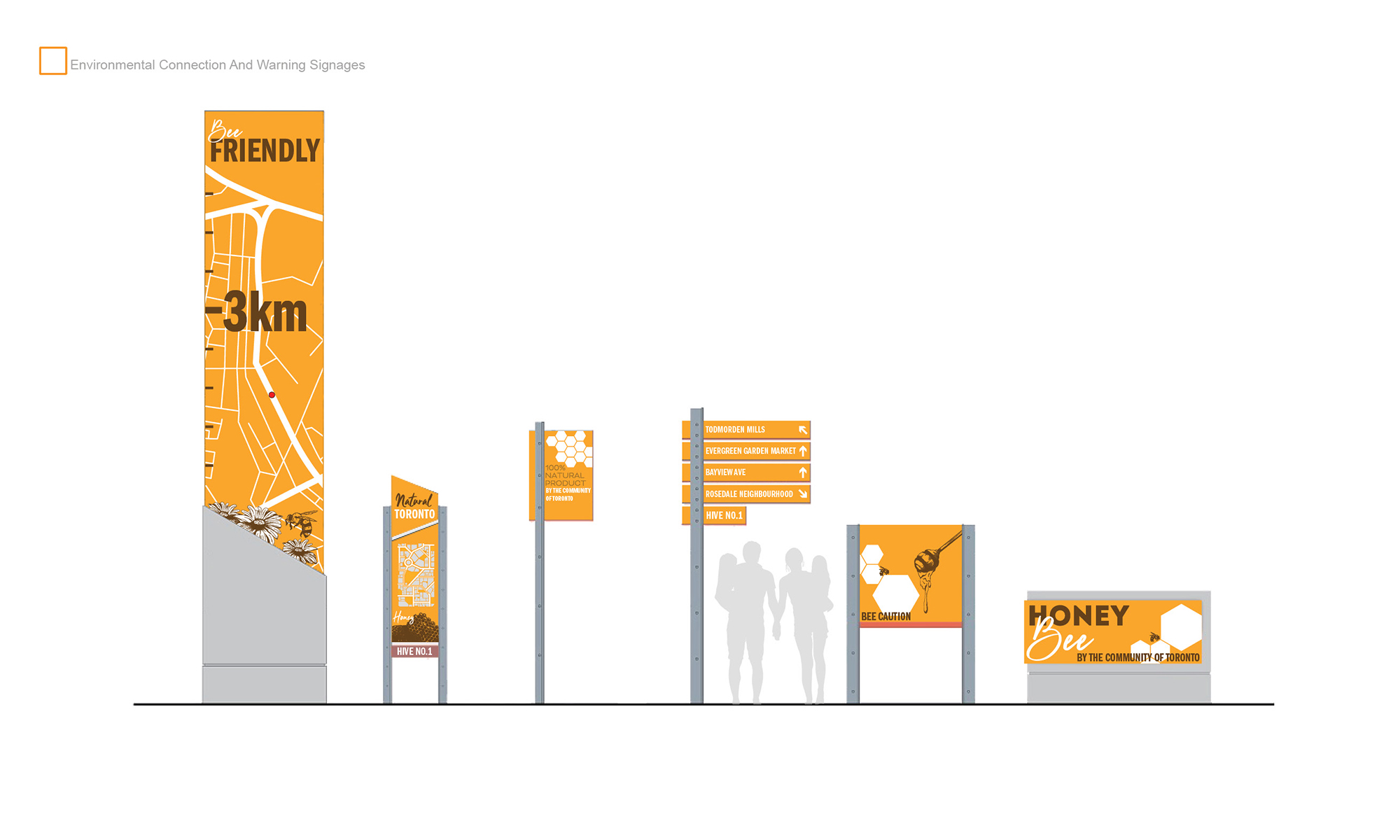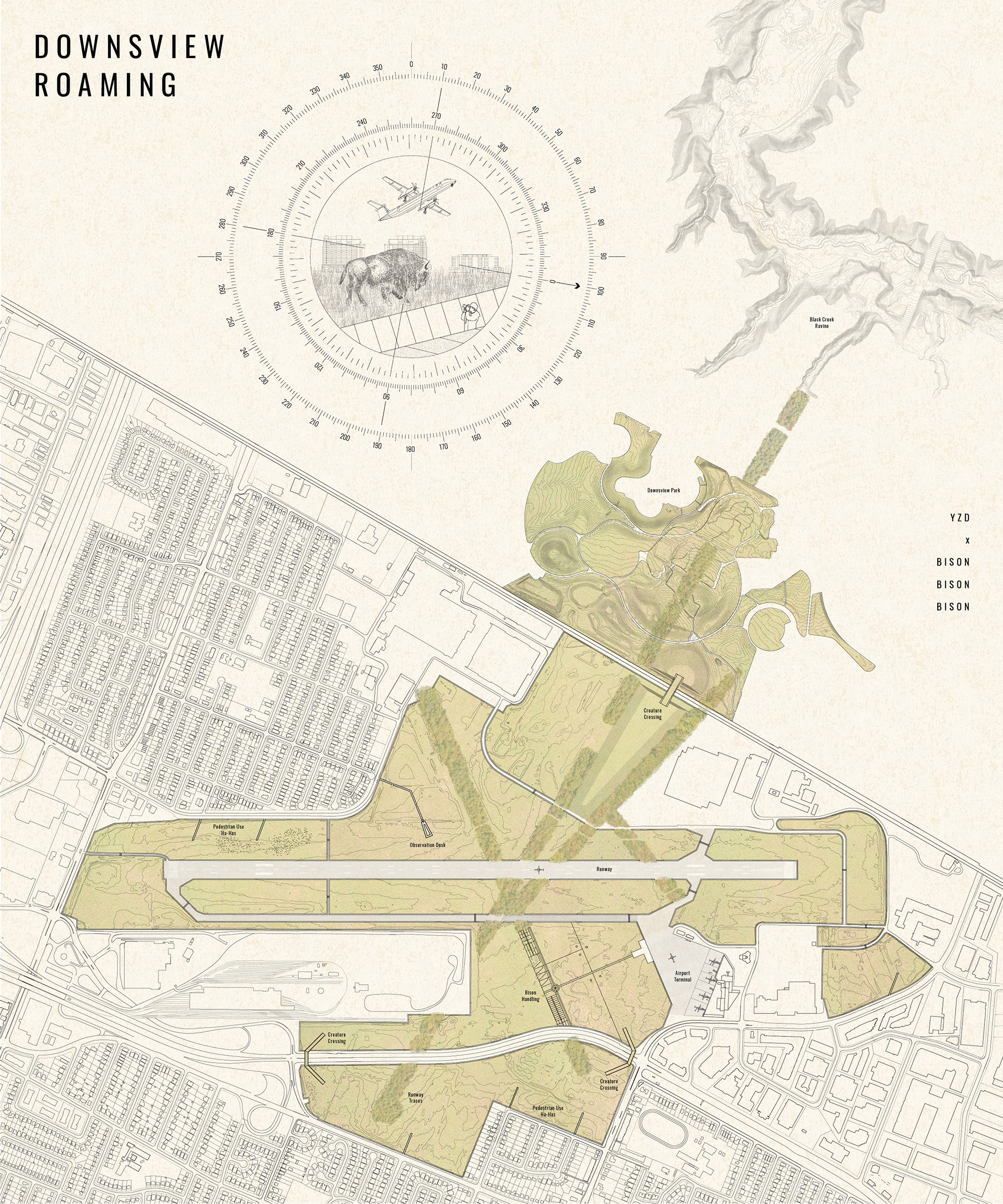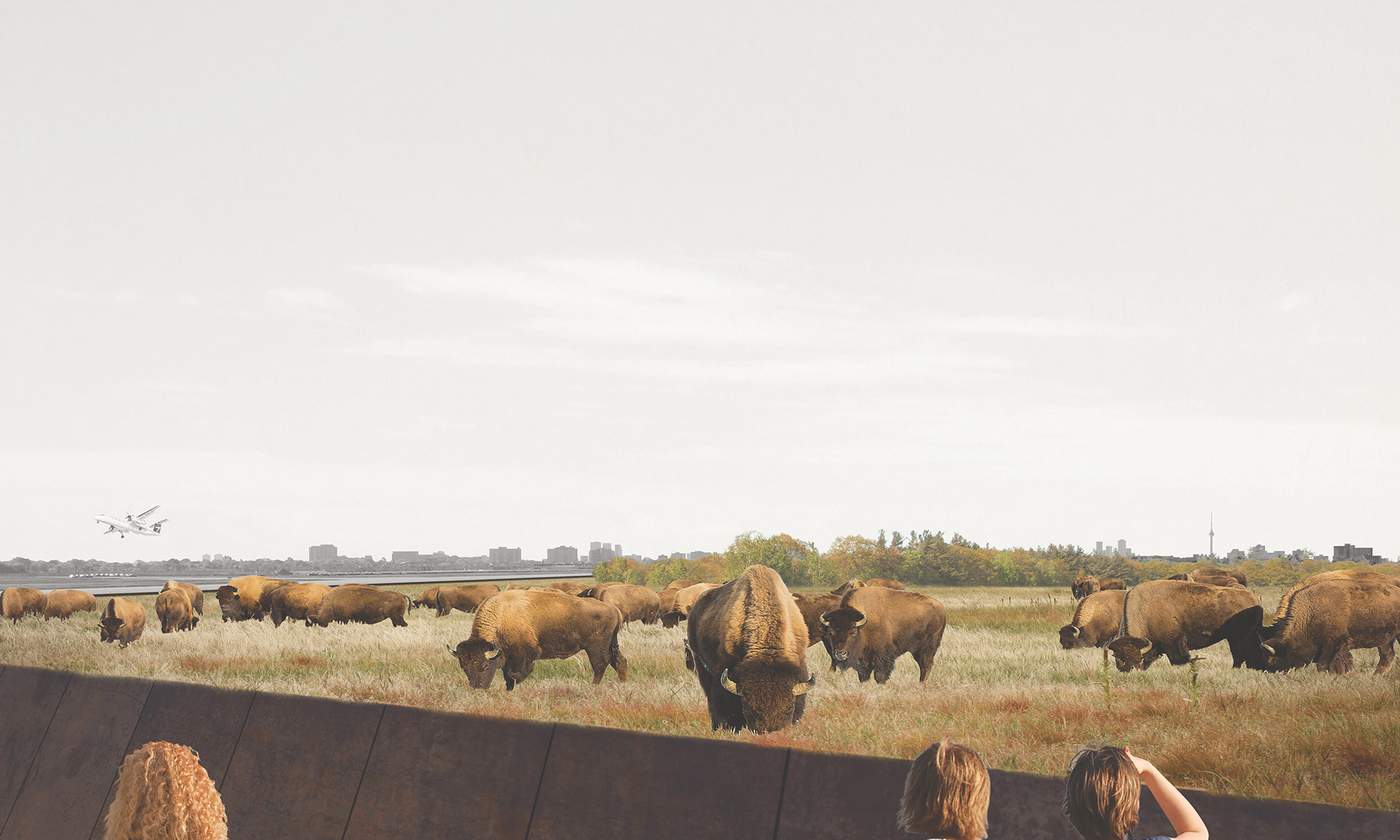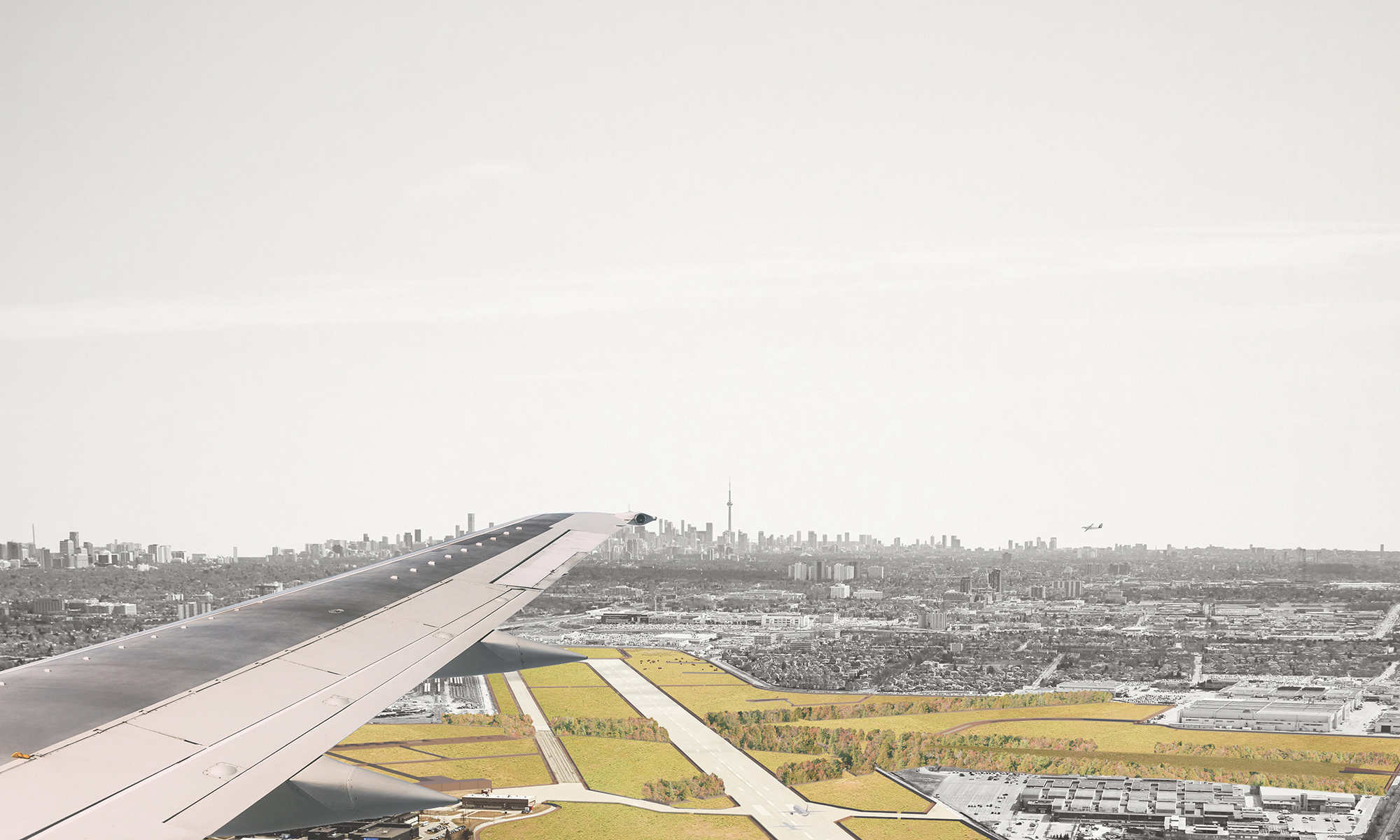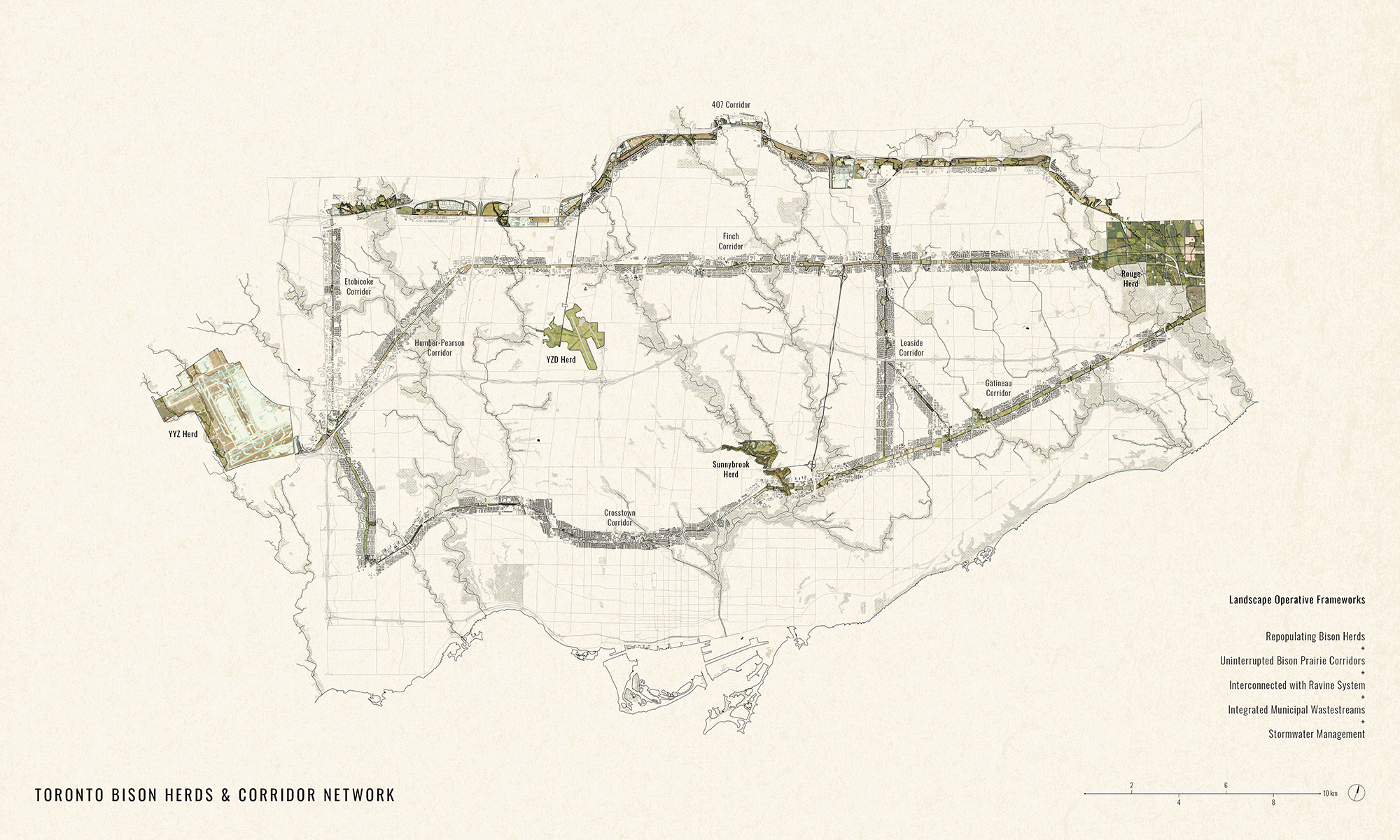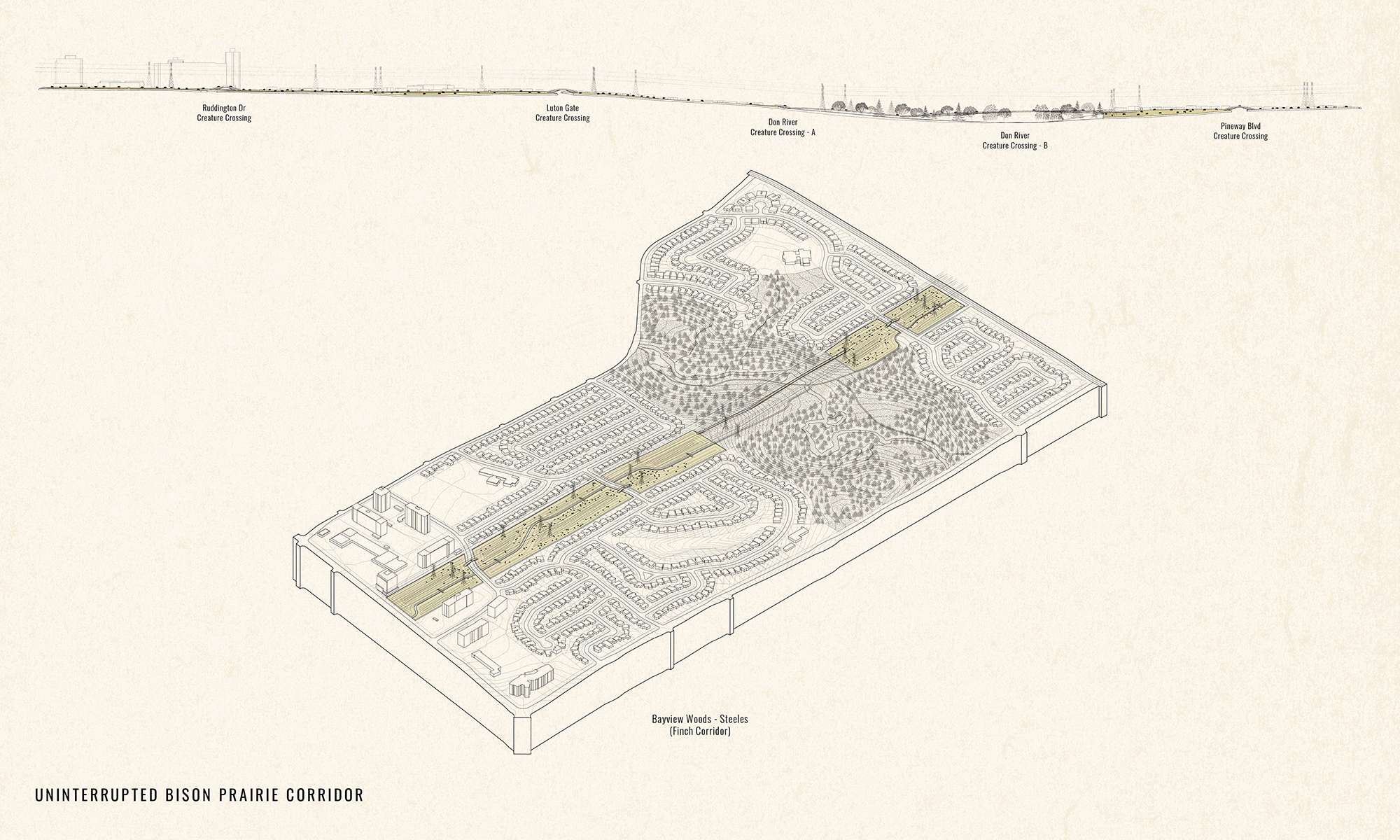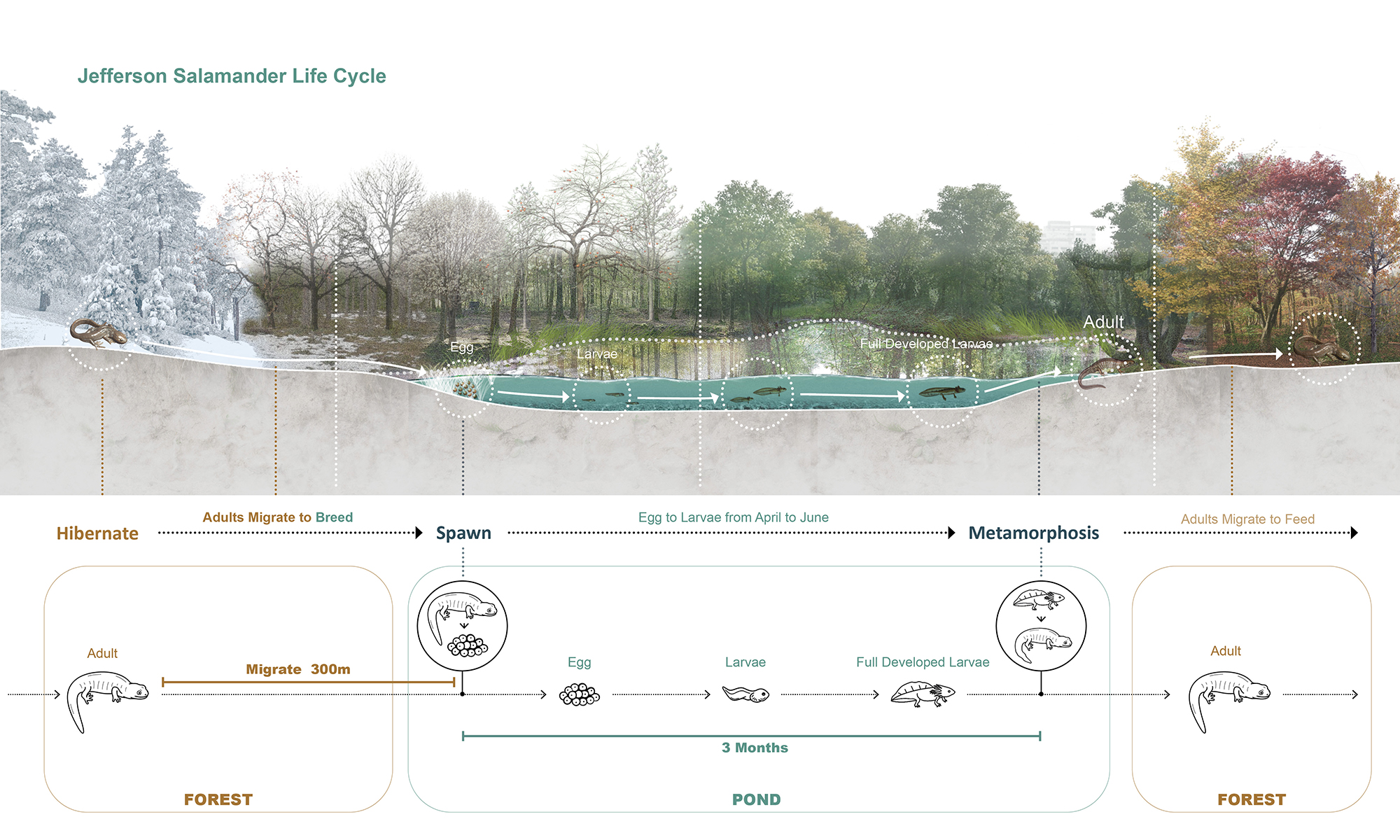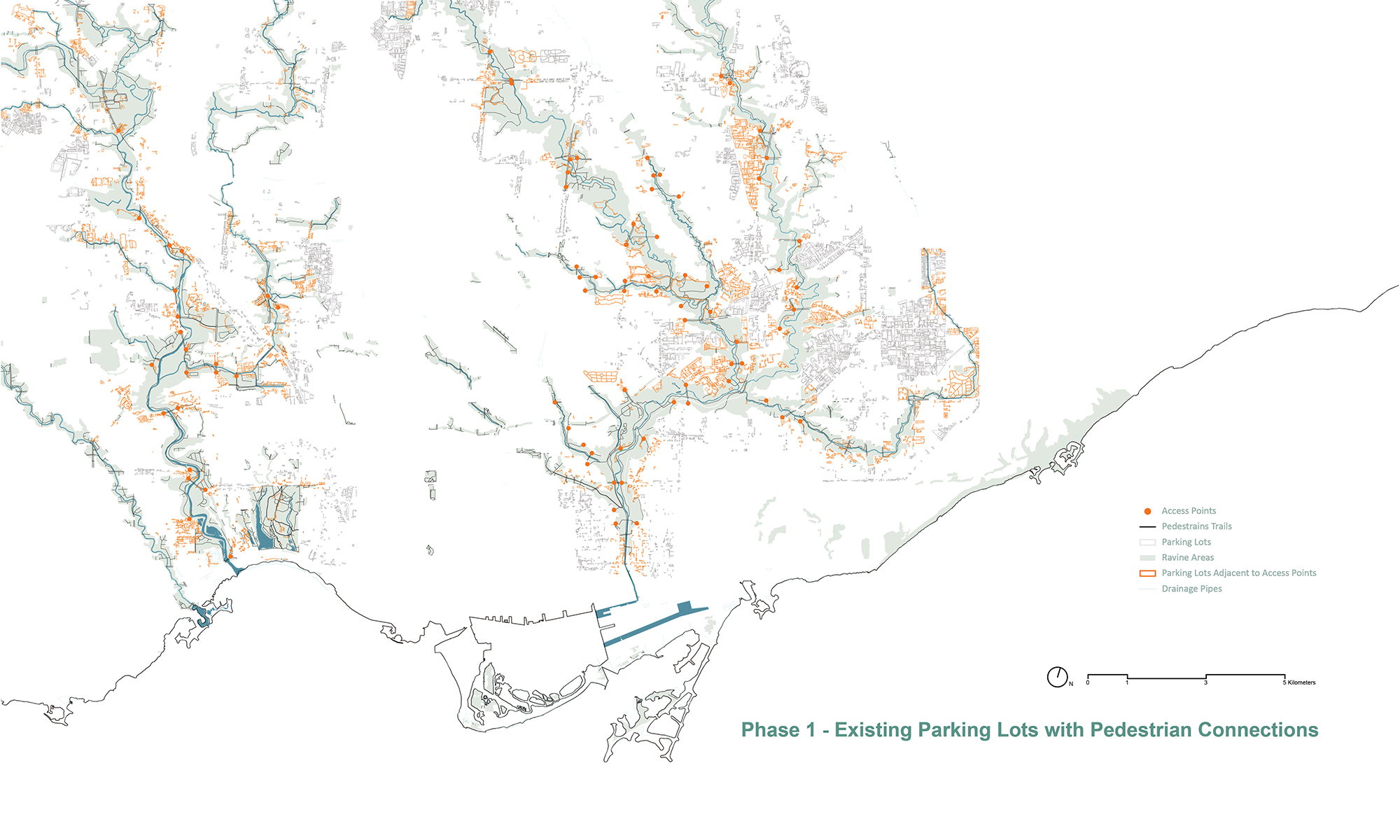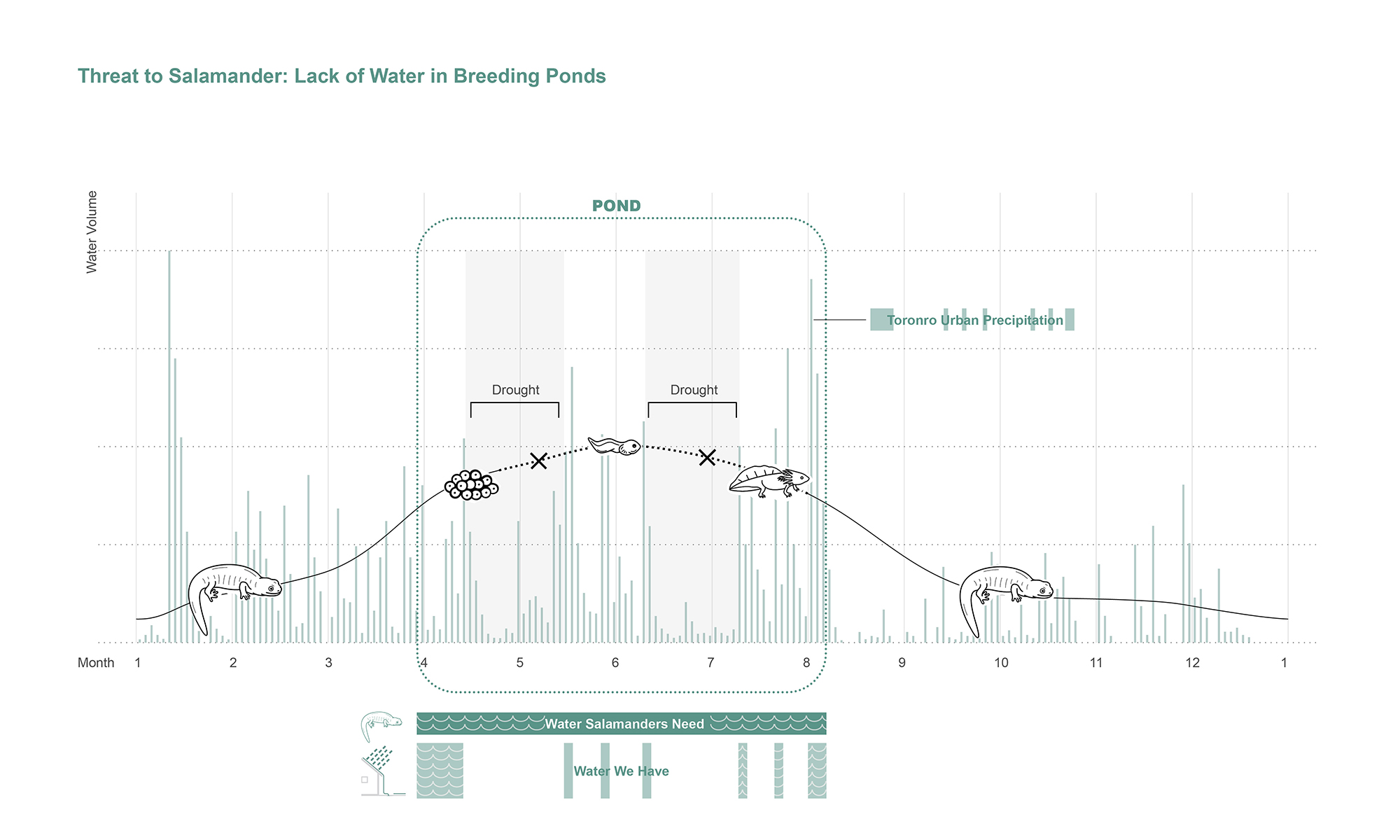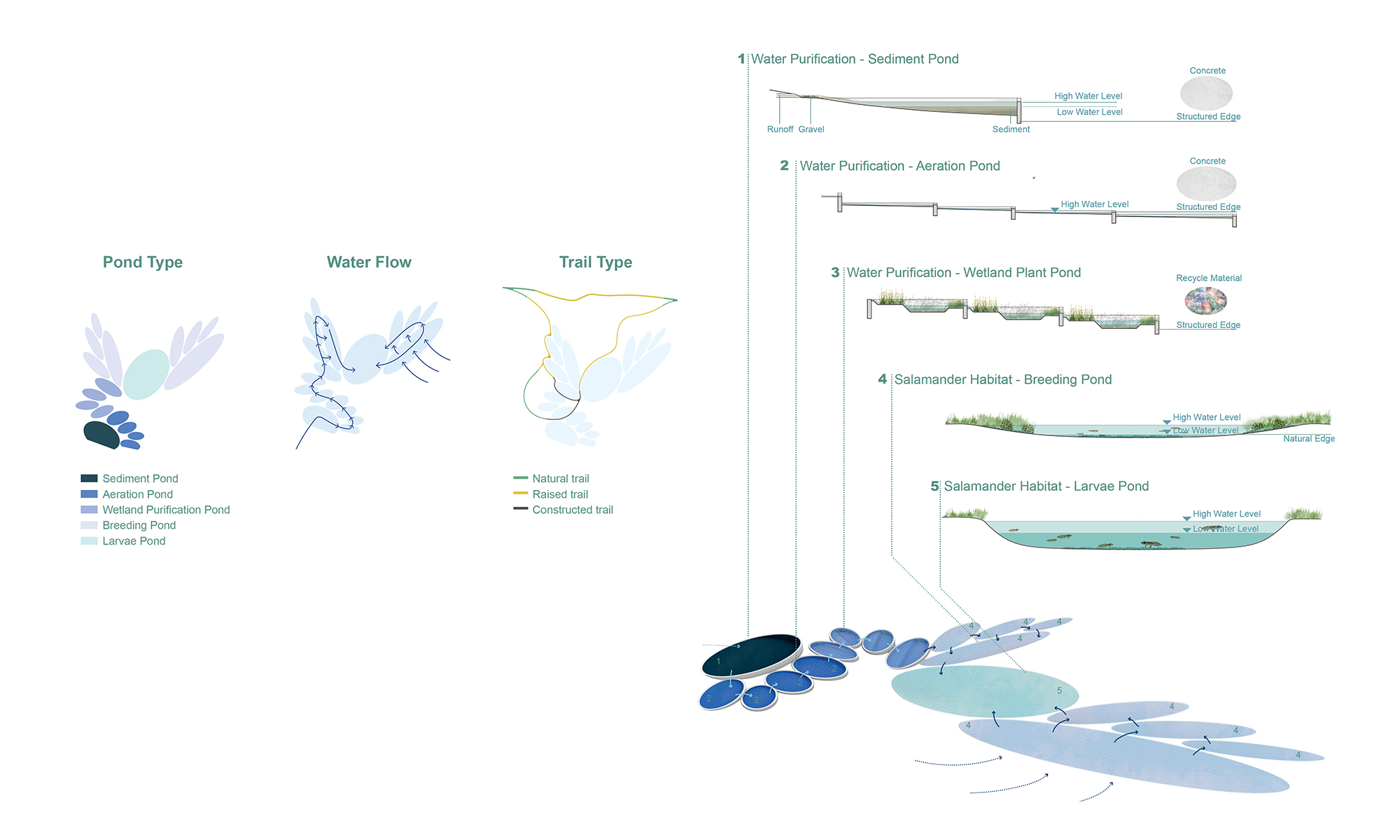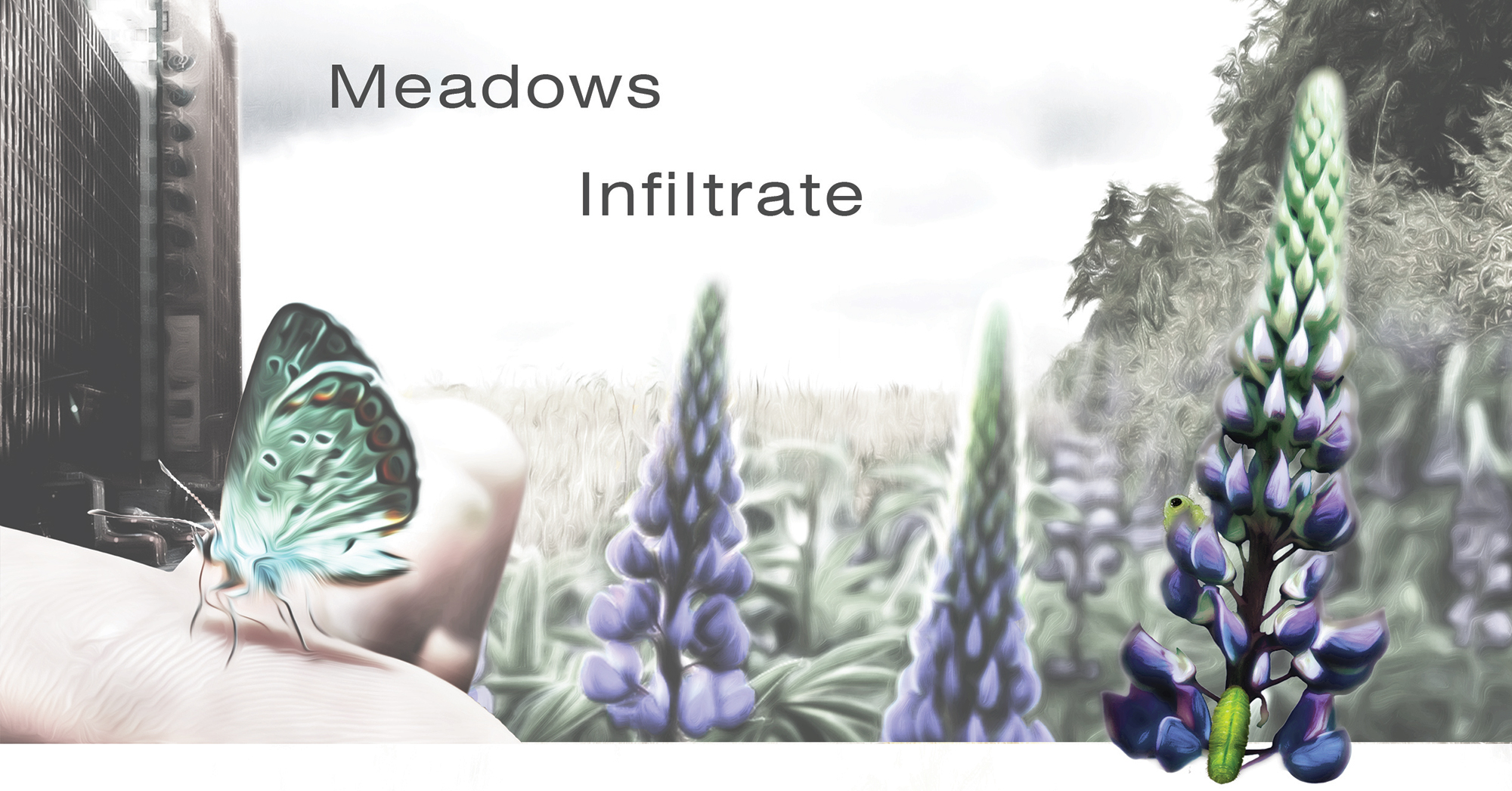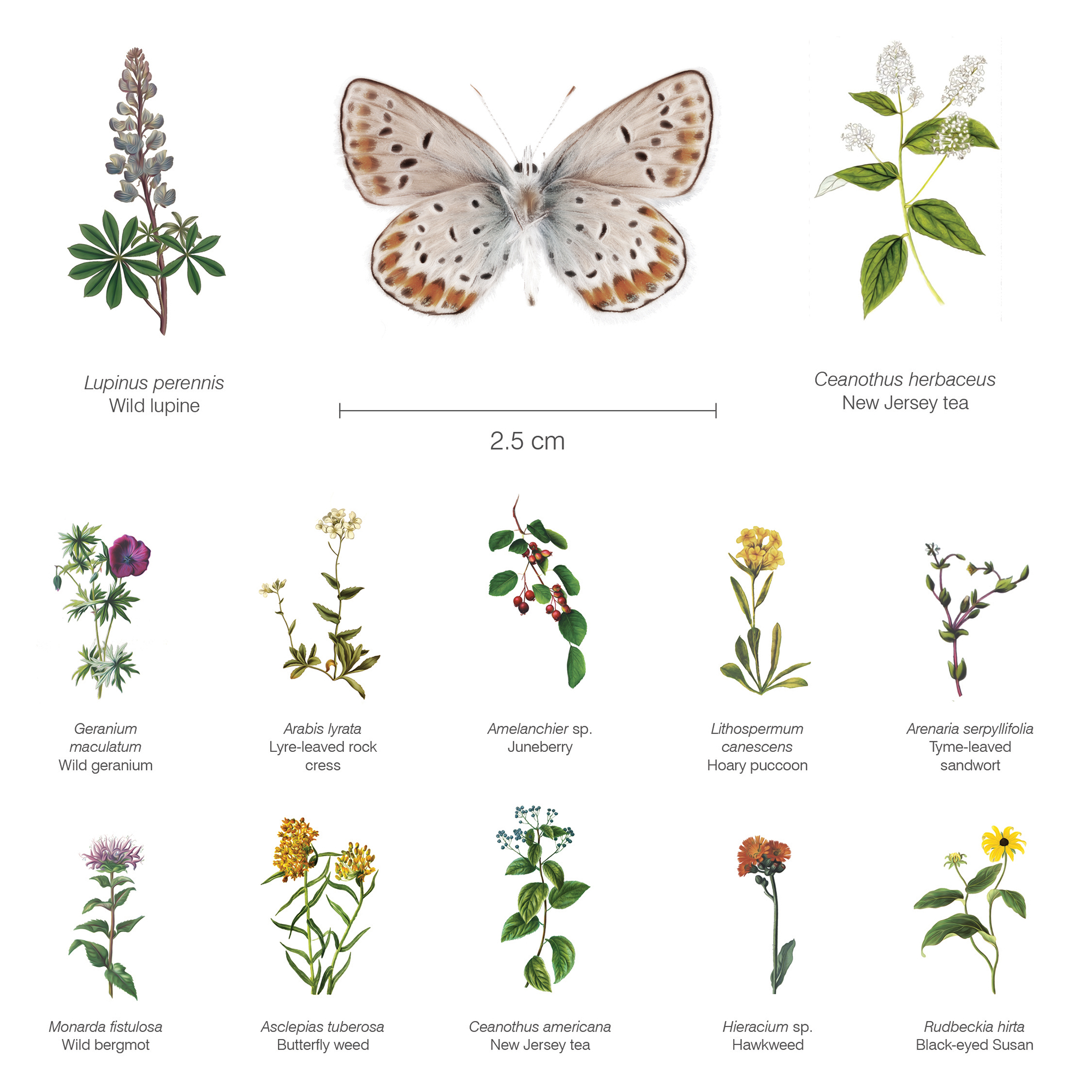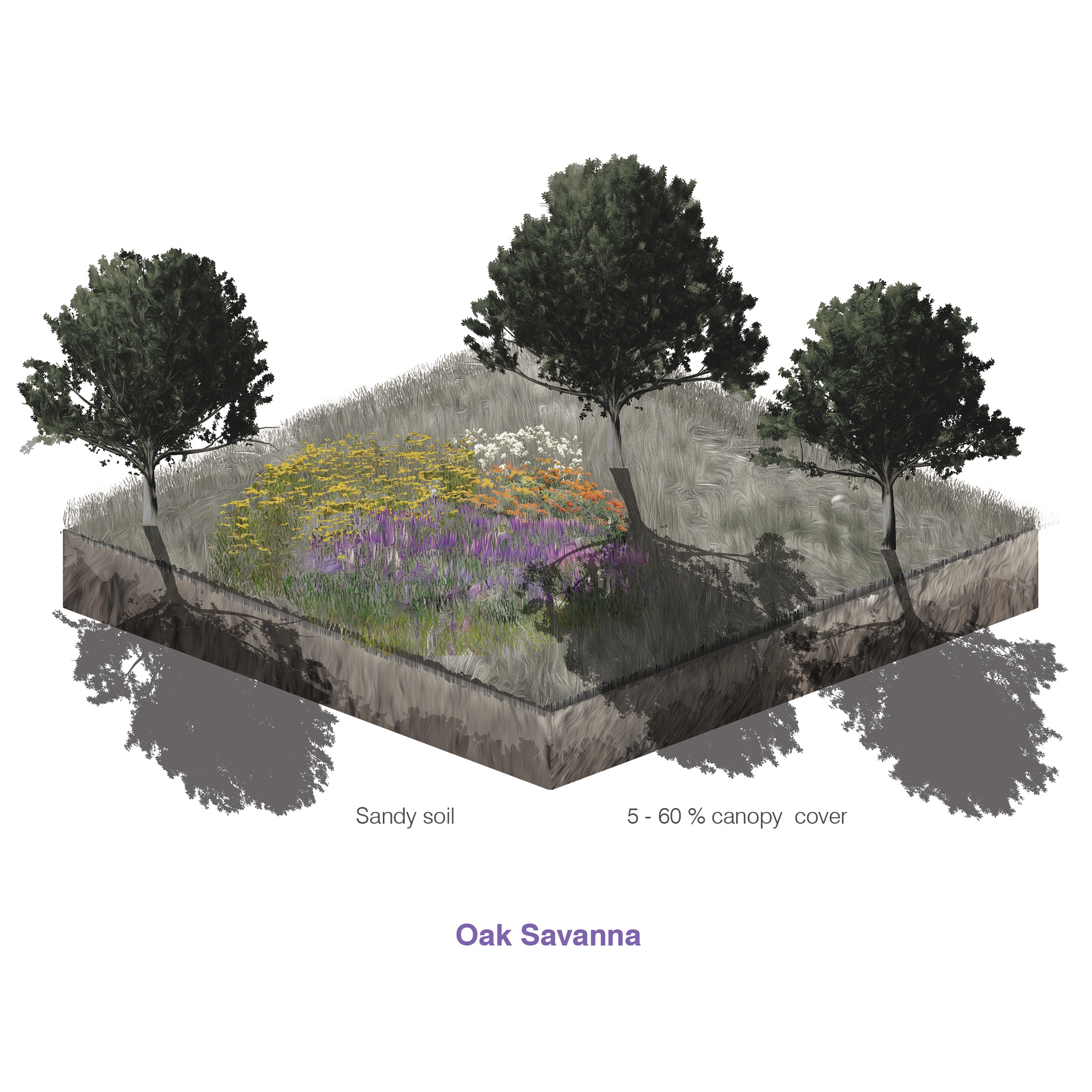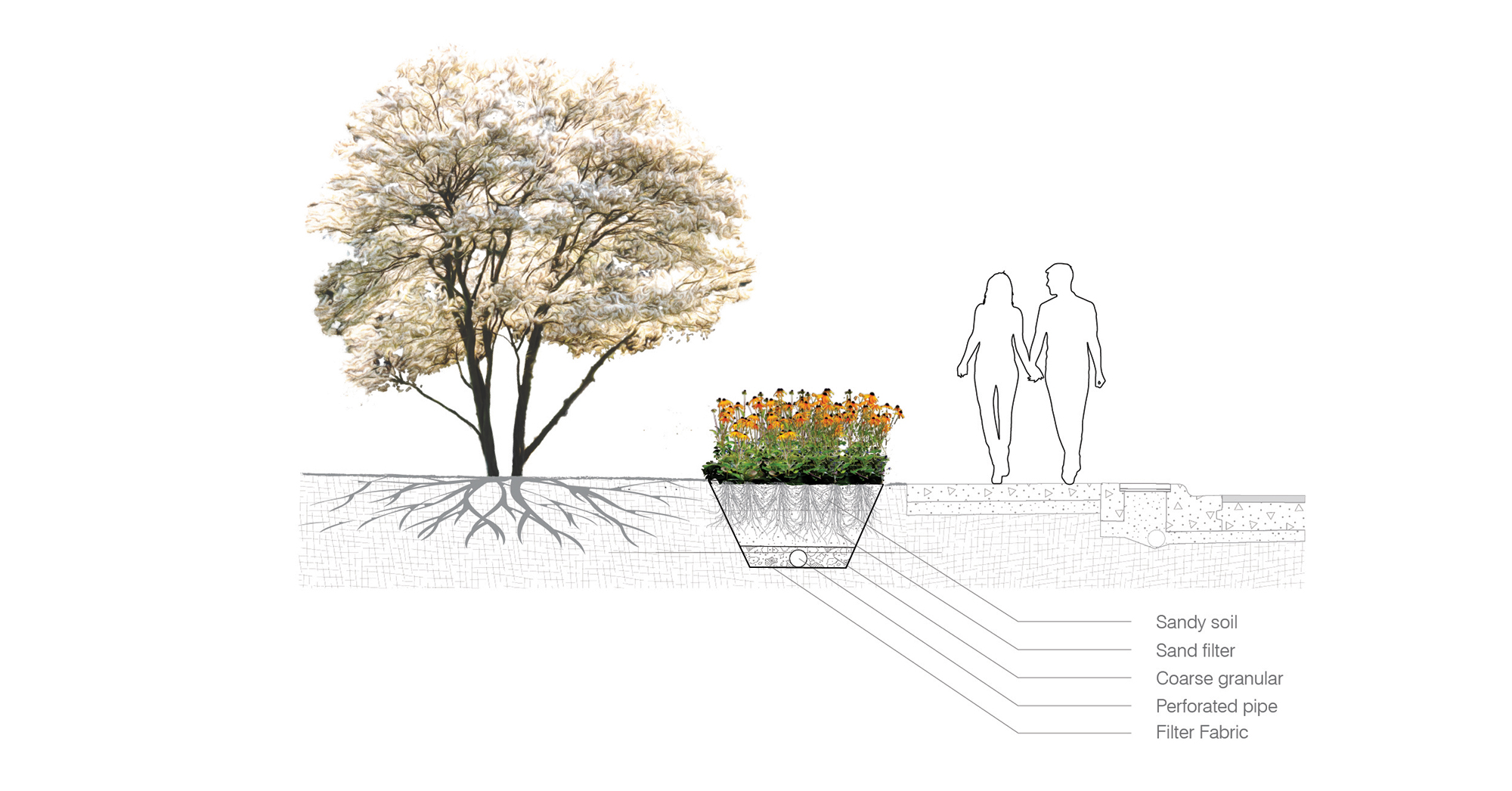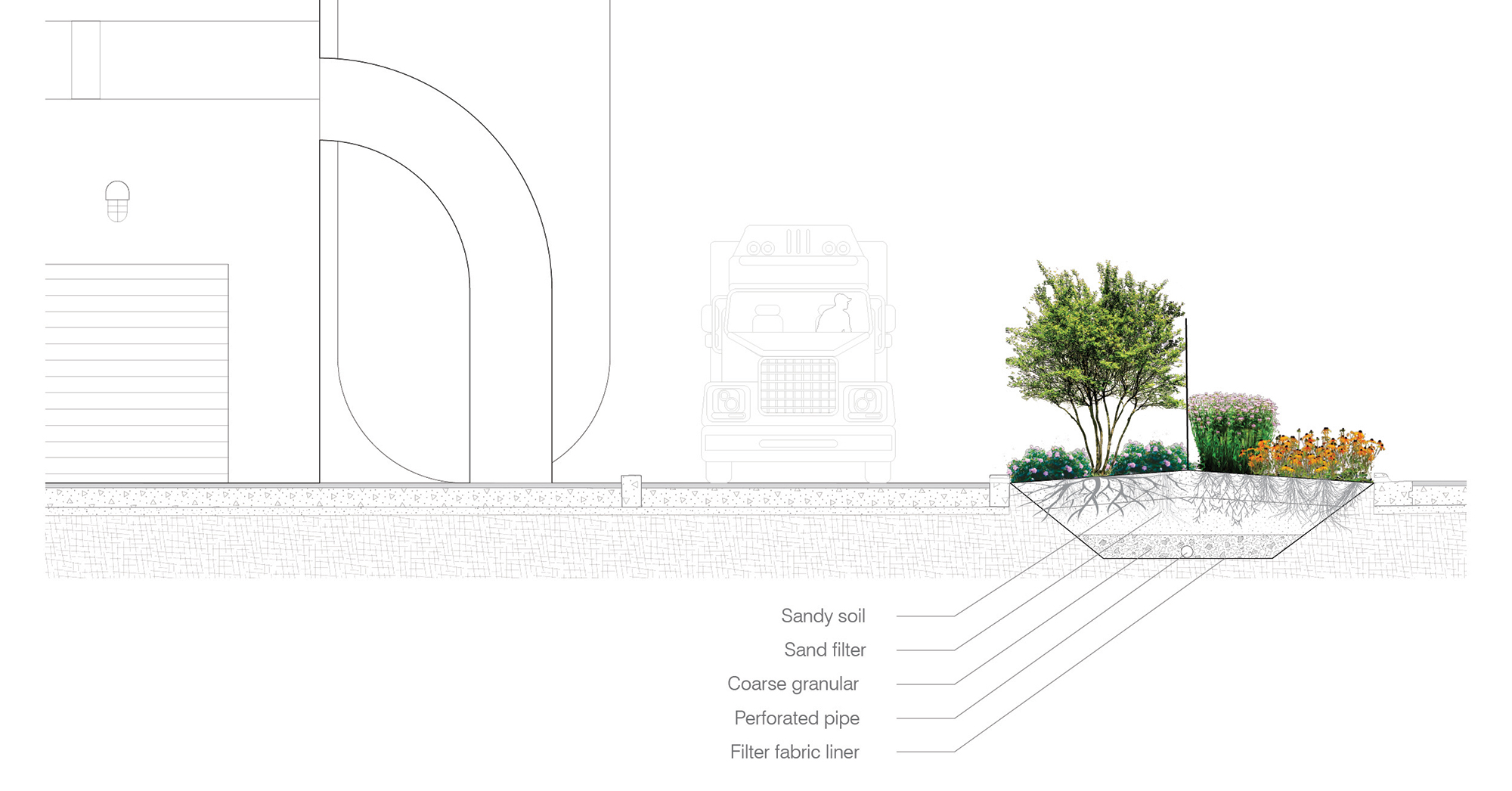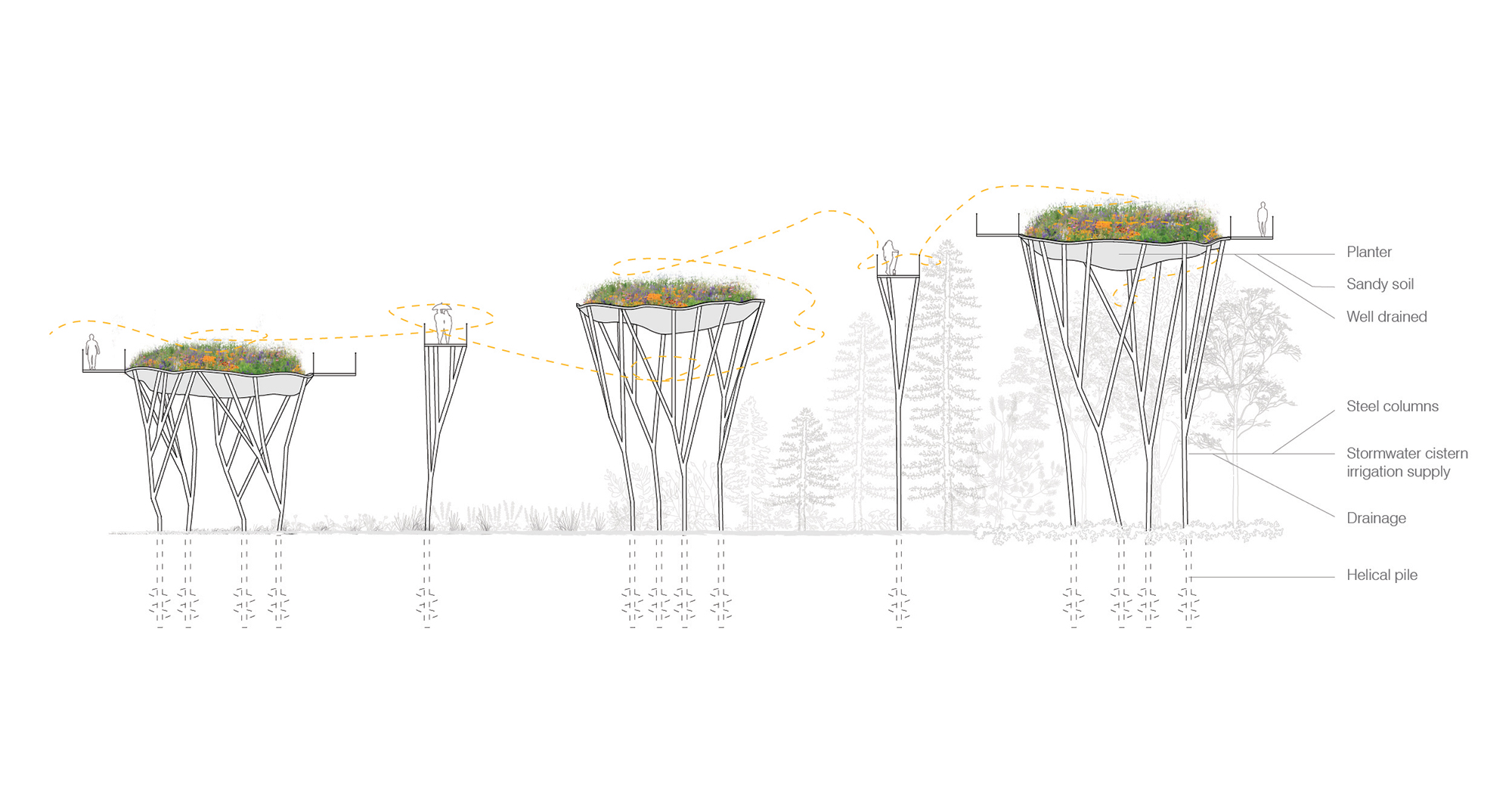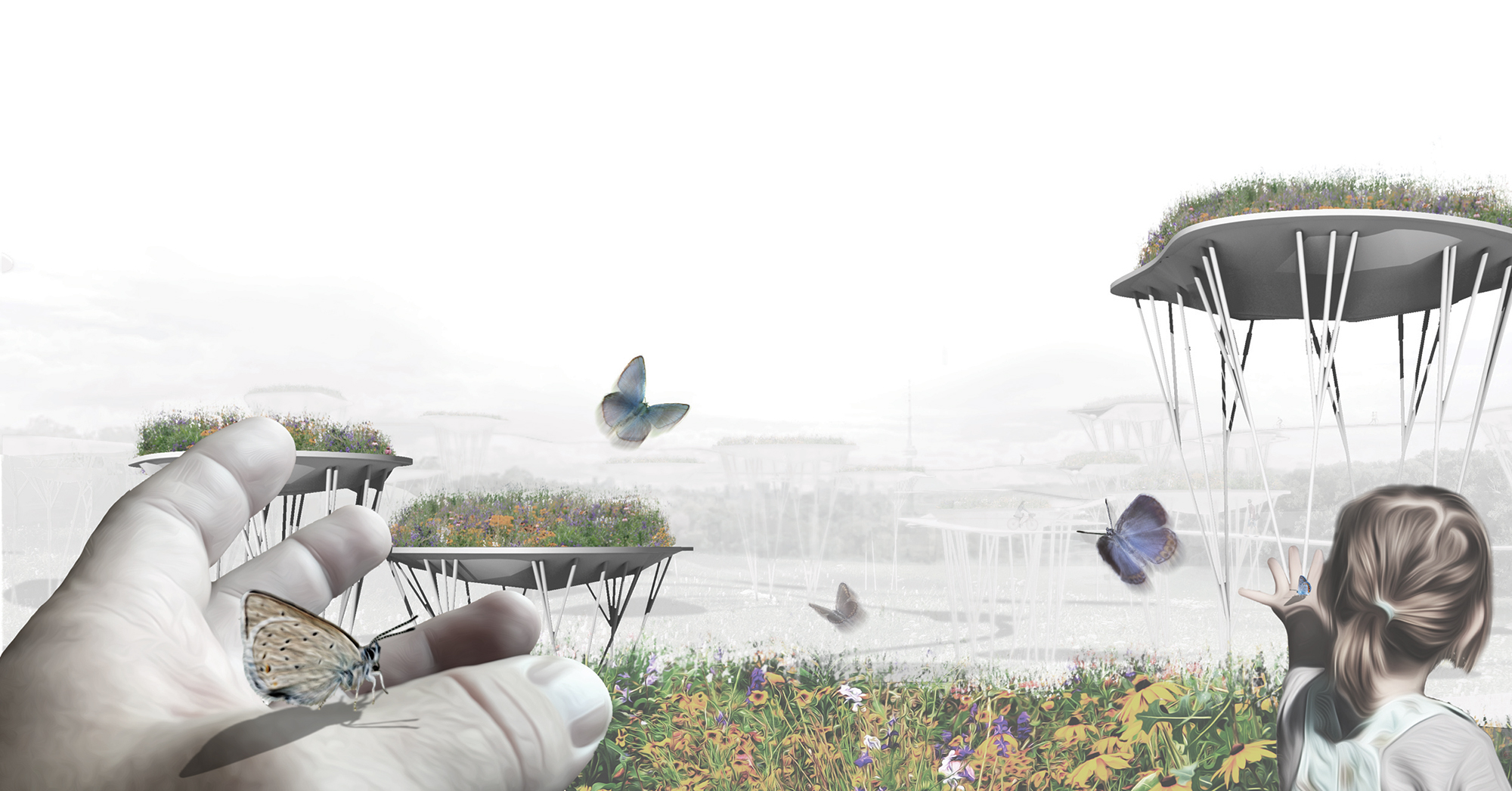LAN3016: Toronto Ravines—CREATURE
In the Toronto Ravines—CREATURE studio, students were asked to imagine a non-human creature as their "client." With that in mind, they produced design proposals for Toronto's ravine systems, following the guidelines of the LA+CREATURE competition. The studio was taught by Alissa North.
Ruiqi Zhao
Ruiqi writes: "The Black Morel (Morchella importuna) is a highly valued edible mushroom found in the wild. It is usually foraged rather than farmed. This creature is very expensive because of its short spring growing period. They can be challenging to cultivate because they have unpredictable growing habits. Morels have symbiotic relationships with specific tree species to obtain nutrients. Sycamore, hickory, ash, elm, or apple trees are good indicators when hunting for morels. This underground relationship with mycelium filaments can take three to five years to develop wild patches of aboveground fruiting bodies of morel. Invasive species such as Norway Maple dominate Toronto’s ravine forest canopy, and the dense shade they cast does not allow enough light to penetrate to the ground for most native species. Disturbed ground — such as from wildfire burns, which reduce invasive species and support native forest growth — often precedes a boom in morel growth. Morels will decompose dead leaves and wood, which replenishes the soil with organic matter and nutrients, also supporting the growth of native species. Wild morel mushrooms can provide the needed impetus to help restore the ravine ecosystem."
Gal Kaufman
Gal writes: "The majority of crops in the world and most of the plants around us require pollination to spread and thrive. The family of pollinator species is large and complex, with bees as the most prevalent and important part of this family worldwide.
Problems, such as climate change, cause some flowers to bloom too early or too late, which is detrimental for bees. Intensive construction in cities causes loss of bee habitat. Accelerated development increases exposure to modern pesticides. These problems leave bees with few and far between food sources during their adult lives. Many species of bees have become endangered in recent years. In North America, bee populations have been reduced by 43 percent since last year.
There are many ways to help bees. This design promotes the success of bees, by positioning an understanding of them as crucial to our lives. The design exposes the lives of bees to the public, when they are passing through an urban trail network. Its honeycomb motifs quietly remind visitors of the crucial pollinator, while its public garden plots, which can be adopted, invite people to participate in the cultivation of bee-friendly food sources. Flowers draw people and bees alike.
The design elements demonstrate that caring for bees can provide them with food resources throughout the city, which will help them continue to fulfill their critical role in ecosystem health — and, ultimately, the survival of all creatures."
Andrew Taylor
Andrew writes: "This scheme reclaims the mono-functioning airport grounds of Downsview by establishing tallgrass prairies in the interstitial areas of the airport and introducing a herd of plains bison to support a broader strategy of repopulating wild Southern Ontario herds over time. A system of ha-has bound the prairie segments creating sunken divisions that secure the bison in place while maintaining planar views across the site. Adjustable stock gaps and creature crossings connect the prairie segments to control bison movement. Phase two of the project expands this scheme by adding three additional sites in the city of Toronto and connecting them all with uninterrupted bison prairie corridors that occupy the existing hydro corridors. A series of landscape operative frameworks adds functionality to these corridors, making them unique ecologically performative stretches of living infrastructure."
Aobo Chen
Aobo writes: "The Jefferson salamander is an amphibious creature. It takes two months for the salamander's metamorphosis from egg to larva to occur, and this phase is spent entirely in ponds. In urban environments, the rapid discharge of surface water through city drainage systems leaves few natural ponds that are able to store water for the salamander’s required two-month duration. Currently, this significant amount of surface runoff is discharged directly into the city’s drainage system without utilization. This design introduces this wasted surface runoff through a series of designed purification and storage ponds. Ultimately, it provides clean and sufficiently lasting water to a final pond where the Jefferson salamander can breed, and its larvae can fully develop to maturity."
Morgan Quinn
Morgan writes: "Toronto lacks wildflower meadow habitat, and our butterfly populations are small as a result. One species, the little Karner blue, was not able to survive urbanization. Its favoured habitat, oak savanna, and its larval food source, the wild lupin, were consumed as the city grew. Now, the impervious surfaces that replaced these habitats contribute to uncontrolled stormwater runoff, which causes more than a hundred million dollars in flood damage each year. Returning the landscape to its former state is not the answer, because modern life demands the urban environment. Instead, we must find ways to integrate the functions and resources provided by these habitats into our cities. Infiltration basins deployed tactically throughout open and remnant spaces is one way the city could mitigate flooding issues. By combining infiltration technology with pollinator gardens, we can also create new butterfly habitat. A fully connected network is possible with one challenge to overcome: the ravines. These wide corridors contain canopy too dense for wildflowers. Likewise, the rivers within restrict human circulation. Elevated Meadows Decks (with bridge connections) will create shade where there is none and provide connections for humans and butterflies alike. "


